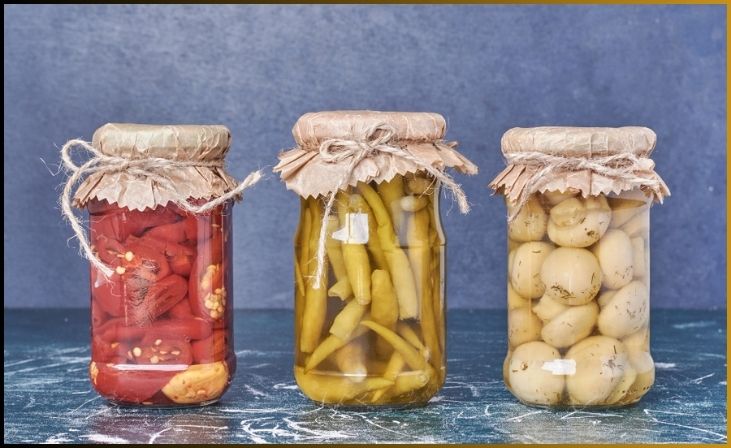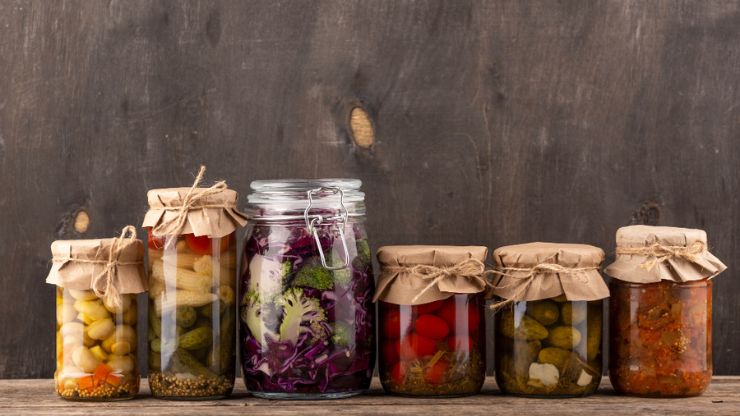Ferment vegetables is a time-honored method that not only preserves their freshness but also enhances their nutritional value. Traditionally, salt has been a crucial ingredient in this process, aiding in the preservation and flavor development.
However, for those looking to reduce their salt intake or explore alternative fermentation methods, there are indeed ways to achieve the tangy, probiotic goodness of fermented vegetables without relying on salt.
In this guide, we’ll delve into four innovative and salt-free techniques that open the door to a world of healthier, yet equally delicious, fermented vegetables.
Ways To Ferment Vegetables Without Salt

Explore a salt-free revolution in vegetable fermentation with innovative methods like brine-free, whey-based, and juice-infused techniques. Discover a world where vibrant flavors meet health-conscious choices in preserving your favorite veggies. Embrace these alternative approaches for a probiotic-rich twist on traditional fermentation, without compromising on taste or nutrition.
1. Brine-Free Fermentation
Fermenting vegetables without the use of traditional salt-based brine introduces a refreshing and health-conscious approach to this ancient preservation method. In brine-free fermentation, the emphasis shifts to coaxing natural juices from the vegetables themselves. Begin by finely chopping your preferred vegetables – cabbage, carrots, or a colorful medley.
The magic happens when you massage these vegetables, breaking down cell walls and encouraging them to release moisture. Pack the massaged veggies tightly into a clean, airtight jar, ensuring they are submerged in their own juices.
To maintain this anaerobic environment necessary for fermentation, use a weight or a clean, heavy object to keep the vegetables pressed down. Embrace the simplicity of brine-free fermentation, allowing the vegetables’ innate flavors and juices to shine, resulting in a crisp, probiotic-rich end product.
2. Whey-Based Fermentation
Enter the world of salt-free fermentation with the innovative technique of whey-based fermentation. Whey, the liquid byproduct from strained yogurt, becomes a powerful fermenting agent in this method. Begin by collecting whey through straining plain yogurt, then mix it with an equal amount of filtered water.
This whey-water blend becomes the catalyst for your fermentation journey. Combine finely chopped vegetables with this potent mixture, ensuring they are fully submerged. Pack them into a clean jar, using a weight to keep the vegetables beneath the liquid.
Don't just scroll, subscribe!
BuzzTrail's unique web-stories are the cure for boredom you've been waiting for.
Whey introduces beneficial bacteria, jumpstarting the fermentation process and offering not only a salt-free alternative but also a subtle tanginess and a probiotic punch to your vegetables. Explore the probiotic potential of whey-based fermentation for a flavorful and health-conscious twist on preserving vegetables.
3. Vegetable Juice Fermentation
Explore a vibrant and salt-free approach to fermentation with Vegetable Juice Fermentation. In this innovative method, vegetable juice becomes the star, bringing both flavor and nutrients to the forefront. Begin by extracting juice from your preferred vegetables—think kale, celery, or cucumber—using a juicer or blender.
Mix the juice with an equal amount of filtered water, creating a liquid base that’s rich in both taste and health benefits. Combine this juice-water mixture with finely chopped vegetables in a jar, ensuring they are fully immersed. The natural sugars in the vegetable juice act as a catalyst for fermentation.
Seal the jar, allowing the vegetables to ferment in their own juice-infused liquid. This method offers a refreshing twist, maintaining the crispness of the vegetables while infusing them with a unique, salt-free tang. Elevate your fermentation game with the crisp and invigorating flavors of Vegetable Juice Fermentation.
4. Fermentation with Starter Cultures
Embark on a salt-free fermentation journey with the dynamic method of Fermentation with Starter Cultures. Whether sourced from probiotic capsules or kefir grains, starter cultures introduce a diverse array of beneficial bacteria without the need for salt. Open a probiotic capsule or blend kefir grains with filtered water to create a liquid starter.
Combine this starter with finely chopped vegetables, ensuring they are thoroughly coated. Pack the mixture into a clean, airtight jar, using a weight to keep the vegetables submerged. The live cultures in the starter initiate fermentation, resulting in a probiotic-rich end product with a unique and nuanced flavor profile.
This method not only provides a salt-free alternative but also opens the door to a world of creative possibilities for preserving and enhancing the nutritional value of your vegetables. Experience the depth and diversity of flavors with Fermentation with Starter Cultures.
Conclusion
Exploring salt-free methods of fermenting vegetables not only caters to dietary preferences but also opens up new avenues for creativity in the kitchen. Whether you opt for brine-free fermentation, rely on whey or vegetable juice, or introduce starter cultures, each method brings its own unique flavor profile and health benefits. Embrace the versatility of salt-free fermentation and elevate your culinary adventures, creating probiotic-rich, flavorful vegetables that align with your dietary goals. With these four methods, the world of salt-free fermentation awaits, promising a healthier twist on this ancient preservation technique.
FAQs
Can vegetables be fermented without salt?
Can vegetables be fermented without salt?
Yes, several salt-free methods exist, offering healthier alternatives to traditional salt-based fermentation.
What is brine-free fermentation?
What is brine-free fermentation?
Brine-free fermentation involves massaging vegetables to release their natural juices, creating a moisture-rich environment for fermentation without relying on a saltwater solution.
How does whey-based fermentation work?
How does whey-based fermentation work?
Whey, extracted from strained yogurt, serves as a salt-free fermenting agent. Mixed with water, it introduces beneficial bacteria to kickstart the fermentation process.

